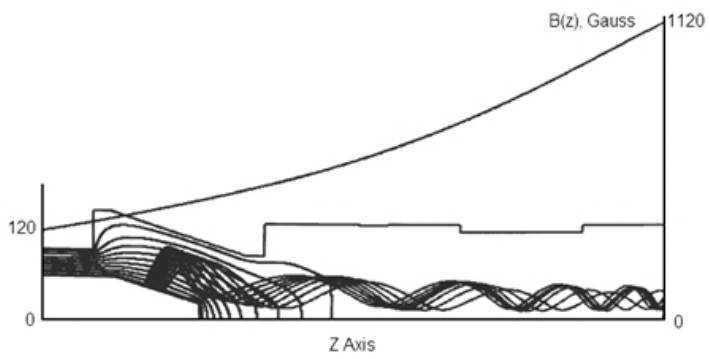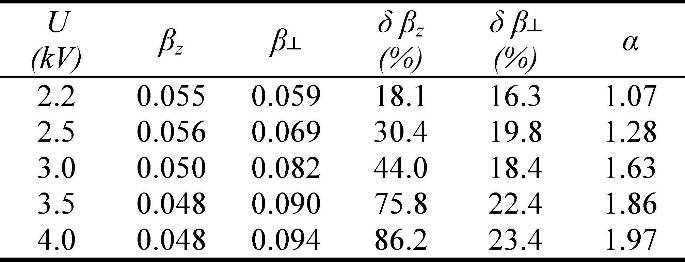Low-Voltage Cyclotron Resonance Maser
The use of gyrotrons for technological applications appears to be of interest if one can realize a relative simple, low cost device which is easy in service (such as magnetron). Our team carries out research and development of the gyrotrons with low magnetic field, low anode voltage, high stability of both output frequency and power.
The low-voltage CRM was developed and designed for operation at 8 GHz with accelerating voltage about 2.2 kV. The photo of the low-voltage CRM is shown in Fig. 1.
The cavity is in the form of cylindrical resonator (diameter 22 mm) with the rings of smaller diameter (19 mm) at the waveguide ends. Such resonator has higher Q-factor for fundamental mode TE11q in comparison with the resonator with diffraction output. The Q factor for fundamental mode TE111 is about 12000. In accordance with this the oscillation start current can be decreased that is very important in CRM operation with low-voltages.
The low-voltage MIG was analyzed with the help of EGUN electron optics and gun-design program. Results of EGUN simulation for MIG with the current of 100mA and accelerating voltage range from 2 to 4kV is shown in Fig. 2.

Electron beam formed in MIG and magnetic field distribution
The energy characteristics of the beam were calculated in the central region of the cavity and are shown in Table I.
ENERGY CHARACTERISTICS OF THE BEAM

The design of the low-voltage MIG is shown in Fig 3.

In our experiments we designed magnetic system that consists of two coils and provides both adiabatically increasing magnetic field in the region of the beam formation and a field with weak magnetic mirrors in the cavity region. Magnetic field intensity is about 0.33 T in the cavity region when the current of the solenoid is about 21 A.
The excitation of oscillations at fundamental mode was obtained at magnetic field B = 0.28 T, accelerating voltage of 2.2 kV. The start current was about 20 mA.
The minimal accelerating voltage value was 2.2 kV in the case of detected radiation. Also at accelerating voltage of 3 kV the excitation of all eigen modes from TE111 to TE117 was observed. Increasing of the accelerating voltage higher than 4 kV leads to generation failure. The oscillation spectra for the case of single mode operation and multiple modes are shown in Fig. 4. Dual-frequency mode was caused by the presence of several magnetic traps in the CRM resonator.

Oscillation spectra of low-voltage CRM at 8 GHz (a) and 8.1 GHz (b)








